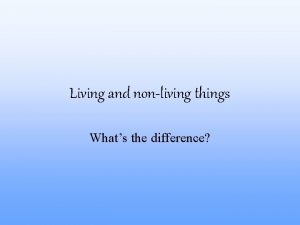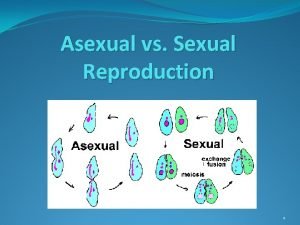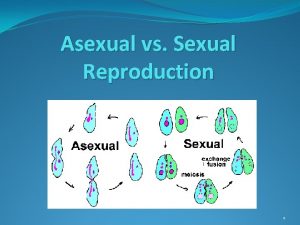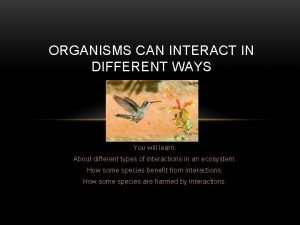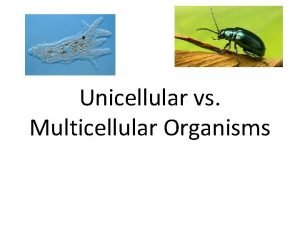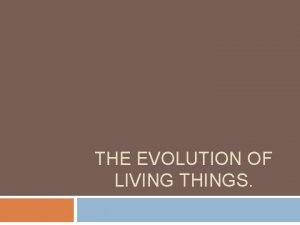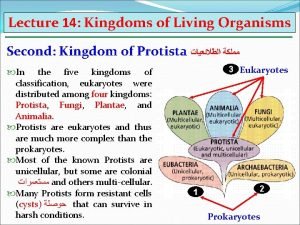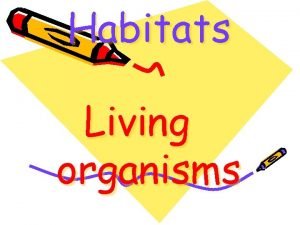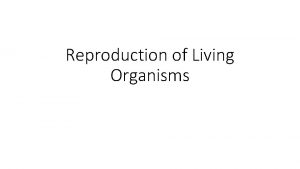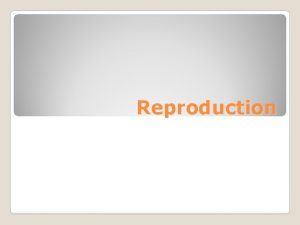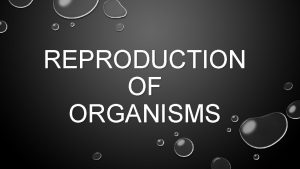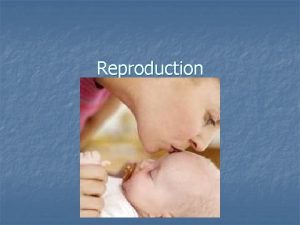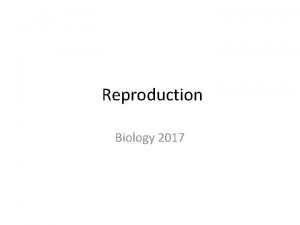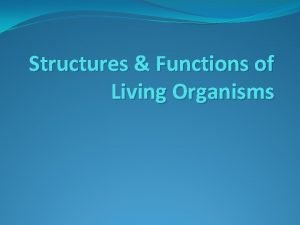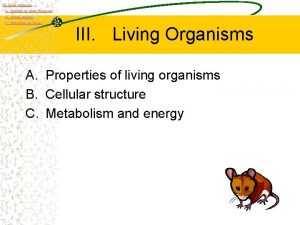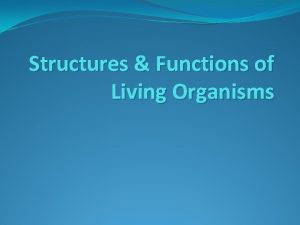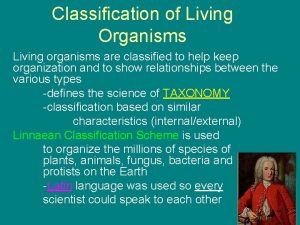Reproduction of Living Organisms Success Criteria Students will














- Slides: 14

Reproduction of Living Organisms

Success Criteria • Students will become familiar with reproductive processes in animals. • Students will be able to explain the mechanisms and effects of puberty. • Students will be able to associate the structures of the male and female reproductive organs with their respective functions.

Reproduction in Animals • Invertebrates (no back bone) may reproduce asexually or sexually • Vertebrates mostly reproduce sexually

Sexual Reproduction (p. 255) • Male gametes (spermatozoa) • Female gametes (ova) • Male and female gametes fuse to create a zygote (single cell) • This stage is called fertilization • Zygote cells divide continuously until and embryo forms • The embryo develops into a small animal • The small animal grows up to produce gametes of their own

Fertilization • External fertilization • Gametes combine outside the body of both parents • Typical for aquatic animals • Ex: salmon lay their eggs before a male fertilizes them with milt • Internal fertilization • Sperm enters the female and migrates towards the ova • Typical for land animals

Hermaphrodites • Both male and female reproductive organs for a single organism • Ex: worms and snails, both will lay eggs after a single act of mating

Human Puberty • Human puberty is a biochemical change which prepares the human body for sexual reproduction • This change is initiated by the pituitary gland which releases sex hormones (typically match your sex at birth) • Male sex hormones: testosterone • Female sex hormones: progesterone and estrogen

What do hormones actually do? • In males: send a signal to the testicles to produce sperm • Males will produce sperm for their entire life • In females: send a signal to the ovaries to produce ova • An ova is released by the ovaries once every 28 days (approximately) • Females a born with a set number of eggs and will normally run out of ova around age 50

Other effects of puberty • Body hair begins to grow (including pubic hair) • Development of breast tissue • Fun fact: 10% men are born with breast tissue • Changes in the larynx cause voices to become deeper (this tends to happen to a greater extend with males)

Male Reproductive Organs p. 263

Testicle

Female Reproductive Organs p. 264 Urethra

Side view of Female reproductive organs Folicles are in the ovaries. Each folicle contains a single ovum.

Quiz on Animal Reproduction • Sexual Reproduction • Fertilization • Human Reproduction: • Puberty & Hormones • Male and female reproductive organs (Structures & functions)
 Blue things
Blue things List of criteria example
List of criteria example Sexual and asexual reproduction venn diagram
Sexual and asexual reproduction venn diagram Hare lynx
Hare lynx Asexual vs sexual reproduction venn diagram
Asexual vs sexual reproduction venn diagram Reproduction of organisms
Reproduction of organisms Examples of sexual reproduction
Examples of sexual reproduction Competitive interaction
Competitive interaction Unicellular and multicellular.
Unicellular and multicellular. Your child's success or lack of success
Your child's success or lack of success Your child's success or lack of success
Your child's success or lack of success What do the rabbit, fungus, and tree have in common? *
What do the rabbit, fungus, and tree have in common? * Similar
Similar 5 levels of organisms
5 levels of organisms Unicellular living organisms
Unicellular living organisms
